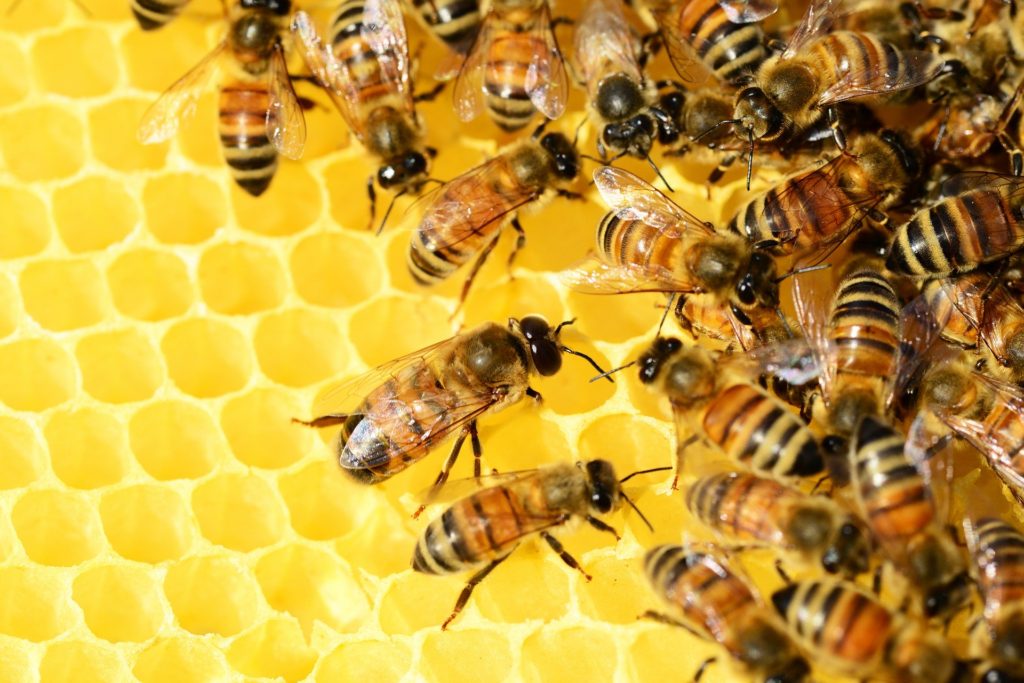Bees are incredible. They can count to three, tell a Picasso from a Monet, solve the Traveling Salesman Problem in the blink of an eye, and make honey – and they pollinate everything from apples, beets, and Brazil nuts to pumpkins, tangerines, and watermelons. And they just might be disappearing, which is something we should all worry about.
See below for ways to help the bees – along with bee stories, bee poems, bees under the microscope, dancing bees, zombie bees, and robotic bees. And, of course, Winnie-the-Pooh.
Table of Contents
BEE TALES
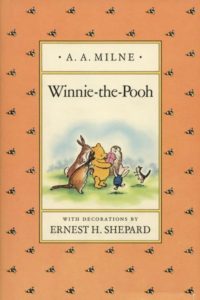
|
A.A. Milne’s Winnie-the-Pooh, originally published in 1926, with wonderful illustrations by Ernest H. Shepard, features a pudgy honey-loving bear who has an unfortunate adventure with bees. Also see the equally delightful sequel, The House at Pooh Corner, and the Latin version, translated by Alexander Lenard – Winnie Ille Pu (Penguin, 1991) – in which Pu loves mel. For all ages, always. |
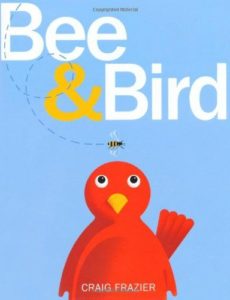
|
Craig Frazier’s charming Bee & Bird (Roaring Brook Press, 2011), with its bright stylized illustrations, is both a journey (from tree to truck to boat to beehive) and a study in perspective, as more and more of the surroundings are revealed. The book moves, for example, from a highly magnified bee to a view of a bee balanced on a seemingly immense bird’s head to bee and bird, perched in a towering tree, and so on. For ages 2-6. |
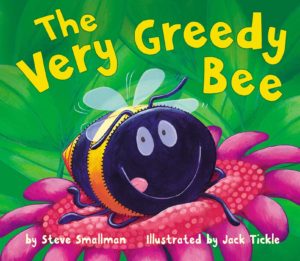
|
Steve Smallman’s The Very Greedy Bee (Tiger Tales, 2010) is a lesson in sharing. The greedy bee refuses to do his share of chores around the hive and spends all his time guzzling pollen and nectar – to the point where, stuffed full, he thumps to the ground, unable to fly. He’s helped home by some kindly fireflies and ants, and all ends happily with a party (featuring honey), some new friendships, and a lesson learned. For ages 3-7. |
| |
Munro Leaf’s The Story of Ferdinand (Viking Juvenile, 2011) recently celebrated its 75th anniversary. This is the now-classic story of the peaceful bull who loves to sit under the cork trees and smell the flowers – until a badly timed bee sting convinces visiting recruiters for the bullfight that Ferdinand would be a perfect candidate for the bullring in Madrid. For ages 3-8. |
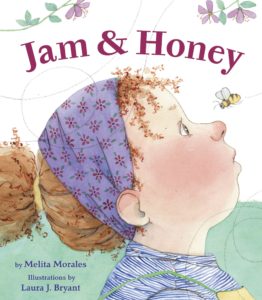
|
Melita Morales’s Jam and Honey (Tricycle Press, 2011) is the story of a little girl gathering berries for jam, and a young bee, looking for nectar to make honey. Initially scared silly of each other, they soon learn to comfortably share the berry patch. For ages 4-8. |
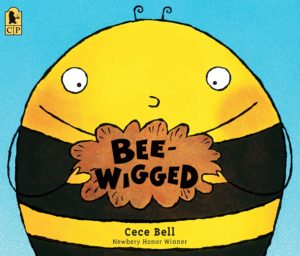
|
In Cece Bell’s Bee-Wigged (Candlewick, 2008), people simply did not like Jerry Bee – who was a perfectly enormous (though friendly) bee. In an attempt to make friends at school, Jerry acquires a wig that hides his antennae and makes him look (well, sort of) like a boy. He’s loved by all, until a wind snatches off the wig, revealing his true bee nature. Luckily the wig – actually a talkative guinea pig named Wiglet – averts panic by reminding people that the real Jerry is a sweetheart. For ages 4-8. |
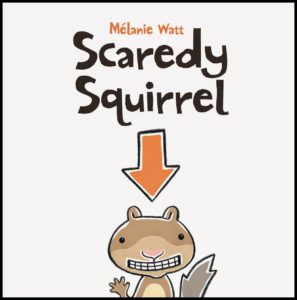
|
The panic-stricken protagonist of Melanie Watts’s Scaredy Squirrel (Kids Can Press, 2008) is terrified of everything – including bees – and so refuses to leave his tree. Anything could be out there in the fearsome unknown – Martians, sharks, tarantulas, germs – though he’s well-prepared for threats with an emergency kit containing everything from antibacterial soap to a parachute. Then one day, terrified by passing (killer?) bees, he leaps from his tree – and discovers, to his amazement, that he’s not just a squirrel: he’s a flying squirrel. There are many sequels, in which Scaredy Squirrel variously fears rabbits, piranhas, jellyfish, falling coconuts, dragons, ghosts, bats, confetti, ponies, and Bigfoot. For ages 4-8. |
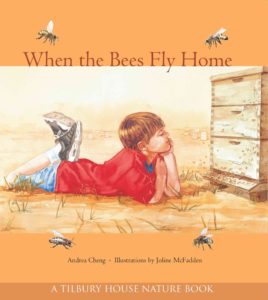
|
In Andrea Cheng’s When the Bees Fly Home (Tilbury House, 2002), Jonathan’s father prefers Jonathan’s athletic younger brother, who is better equipped to help with the family beekeeping business. When a drought hits and the family finances are threatened, artistic Jonathan saves the day with his creative beeswax candles. A story of differently talented kids, packed with a lot of bee facts. For ages 5-10. |
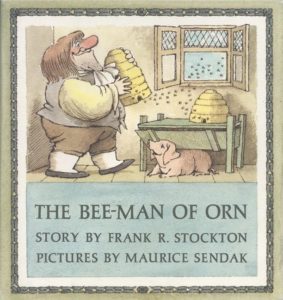
|
Frank R. Stockton’s The Bee-Man of Orn (Candlewick, 2004) is a reprint of the 1964 original. The elderly Bee-Man lives contentedly with his bees until a visiting Junior Sorcerer informs him that he’s been “transformed from something else” and encourages him to go on a quest to discover his original form. He does, with enlightening and surprising results. A classic for ages 6-11. |
| The text of The Bee-Man of Orn is online at Project Gutenberg. | |
| From the Prindle Institute for Ethics, see background information and discussion questions for The Bee-Man of Orn. The main theme: the importance of self-exploration and examination. | |
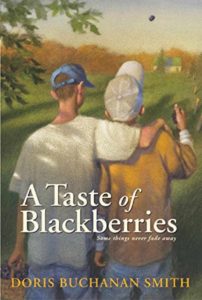
|
Doris Buchanan Smith’s A Taste of Blackberries (HarperCollins, 2004), originally published in 1973, deals sensitively with tragedy, when the narrator’s best friend, Jamie, dies of an allergic reaction to a bee sting. Poignant, thought-provoking, and ultimately healing for ages 7-10. |
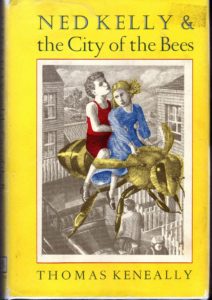
|
In Thomas Keneally’s Ned Kelly and the City of Bees (David R. Godine, 1995), young Ned – in the hospital recovering from appendicitis – is visited by a bee, Apis, who gives him a drop of golden liquid that shrinks him to a size where he can ride on her back. Off he goes with Nancy Clancy – who speaks in rhymes and has lived with the bees for over a century – for a summer of adventure, during which he learns the ways of the hive, meets the bee queen and an activist drone named Basil, and helps fight off an attack by wasps. Genuine bee science delivered through fantasy/sci fi. For ages 9-12. |
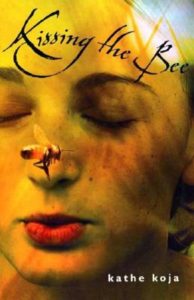
|
In Kathe Koja’s Kissing the Bee (Farrar, Straus & Giroux, 2007), it’s senior year in high school, and Dana – a hopeful science writer and bee researcher – is dealing with her changing relationship with her best friend Avra (the “queen bee” in her social circle) and with Avra’s boyfriend, Emil, with whom Dana is in love. A teen romance and coming-into-your-own story with bees. For ages 13 and up. |
| From the Brothers Grimm, The Queen Bee is the tale of three brothers, the youngest of whom triumphs because of his kindness to ants, ducks, and bees. | |
| Also see Fairy Tales. |
